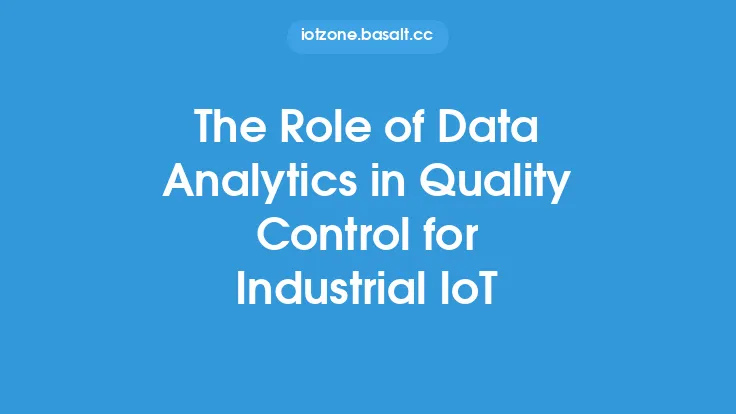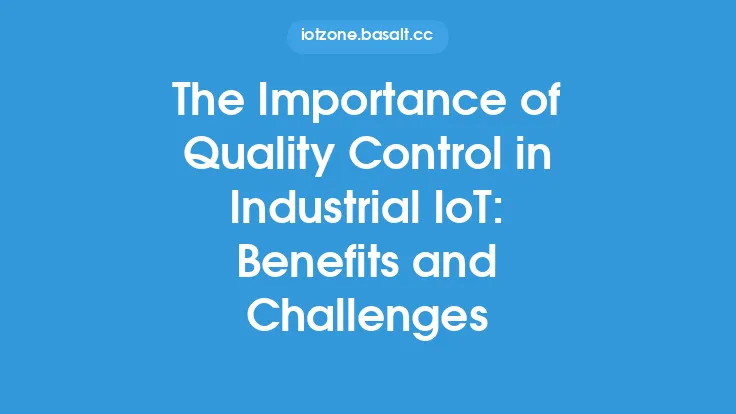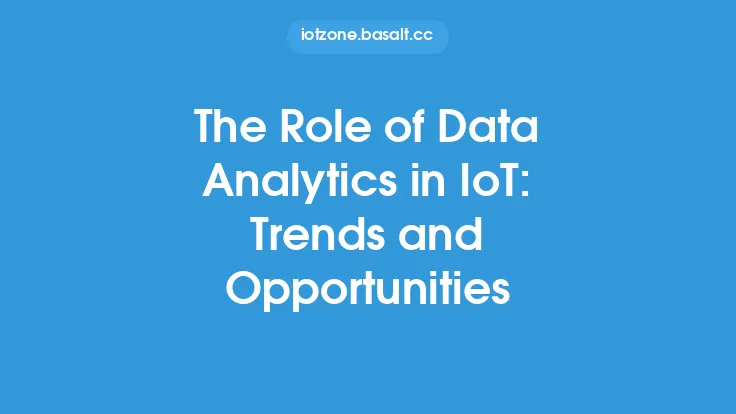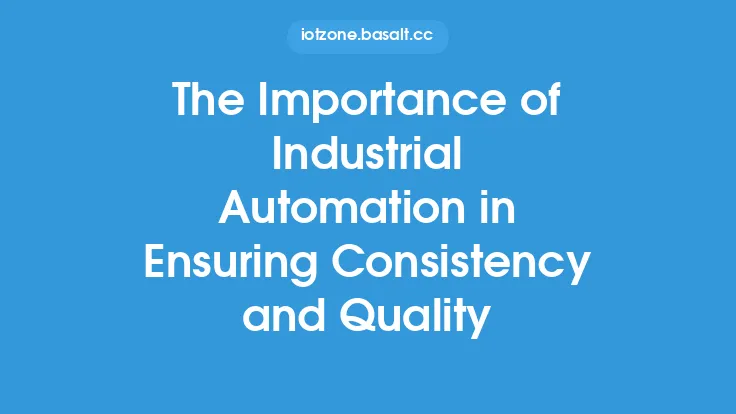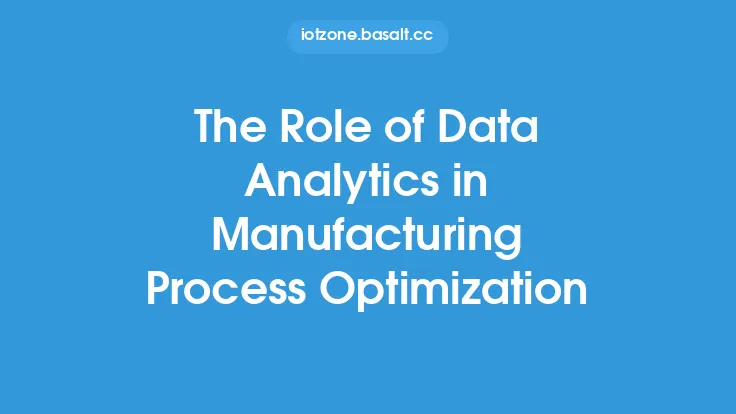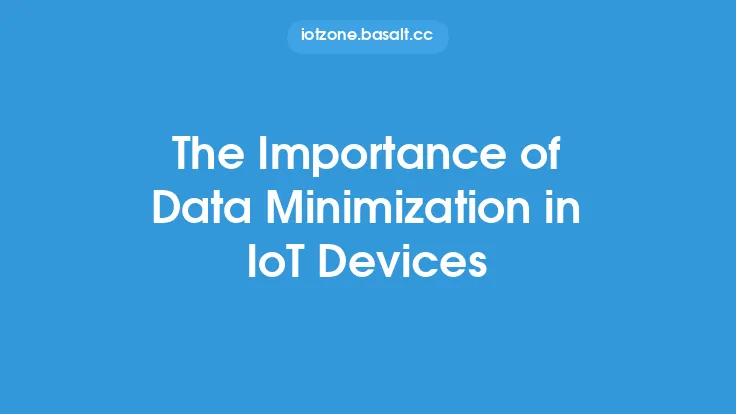The Internet of Things (IoT) has revolutionized the way we live and work, with an ever-increasing number of devices connected to the internet, generating vast amounts of data. This data, when analyzed, can provide valuable insights that can inform business decisions, improve operational efficiency, and drive innovation. However, the accuracy and reliability of these insights depend on the quality of the data being analyzed. In the context of IoT analytics, data quality is paramount, as it directly impacts the effectiveness of the insights and decisions derived from it.
Introduction to Data Quality in IoT Analytics
Data quality in IoT analytics refers to the accuracy, completeness, consistency, and reliability of the data generated by IoT devices. With the proliferation of IoT devices, the volume, velocity, and variety of data have increased exponentially, making data quality a significant challenge. Poor data quality can lead to incorrect insights, flawed decision-making, and ultimately, a failure to realize the full potential of IoT analytics. Therefore, it is essential to ensure that the data used for analysis is of high quality, free from errors, and consistent.
Characteristics of High-Quality IoT Data
High-quality IoT data exhibits several characteristics, including accuracy, completeness, consistency, and timeliness. Accurate data is free from errors and reflects the true state of the device or system being monitored. Complete data includes all the necessary information required for analysis, while consistent data follows a standard format and is free from inconsistencies. Timely data is available when needed, and its delivery is not delayed, which is critical in real-time analytics applications. Additionally, high-quality IoT data should be relevant, meaningful, and contextual, providing valuable insights that can inform business decisions.
Challenges in Ensuring Data Quality in IoT Analytics
Ensuring data quality in IoT analytics is a complex task, due to the unique characteristics of IoT data. IoT devices generate data in various formats, including structured, semi-structured, and unstructured data, which can make it challenging to integrate and analyze. Furthermore, IoT devices are often deployed in harsh environments, where they are exposed to extreme temperatures, humidity, and other factors that can affect their performance and data quality. Other challenges include data noise, missing values, and inconsistencies, which can arise from device malfunctions, communication errors, or other issues.
Data Quality Assessment and Validation
To ensure the quality of IoT data, it is essential to assess and validate the data regularly. This involves checking the data for errors, inconsistencies, and completeness, as well as verifying its accuracy and relevance. Data quality assessment and validation can be performed using various techniques, including data profiling, data cleansing, and data transformation. Data profiling involves analyzing the data to identify patterns, trends, and correlations, while data cleansing involves removing errors, duplicates, and inconsistencies. Data transformation involves converting the data into a standard format, making it easier to integrate and analyze.
Data Preprocessing Techniques for IoT Data
Data preprocessing is a critical step in ensuring the quality of IoT data. It involves cleaning, transforming, and preparing the data for analysis. Various data preprocessing techniques can be applied to IoT data, including data filtering, data aggregation, and data normalization. Data filtering involves removing noise and irrelevant data, while data aggregation involves combining data from multiple sources to provide a more comprehensive view. Data normalization involves scaling the data to a standard range, making it easier to compare and analyze.
Impact of Poor Data Quality on IoT Analytics
Poor data quality can have a significant impact on IoT analytics, leading to incorrect insights, flawed decision-making, and a failure to realize the full potential of IoT analytics. Inaccurate or incomplete data can result in incorrect predictions, while inconsistent data can lead to conflicting insights. Furthermore, poor data quality can lead to a loss of trust in the analytics system, making it challenging to implement IoT analytics solutions. Therefore, it is essential to prioritize data quality in IoT analytics, ensuring that the data used for analysis is accurate, complete, consistent, and reliable.
Best Practices for Ensuring Data Quality in IoT Analytics
To ensure the quality of IoT data, several best practices can be followed, including implementing data validation and verification processes, using data preprocessing techniques, and monitoring data quality regularly. Additionally, it is essential to use standardized data formats, ensure data consistency, and provide training and support for users. By following these best practices, organizations can ensure that their IoT data is of high quality, providing accurate and reliable insights that can inform business decisions and drive innovation.
Conclusion
In conclusion, data quality is a critical aspect of IoT analytics, directly impacting the effectiveness of the insights and decisions derived from it. Ensuring the quality of IoT data requires a comprehensive approach, involving data quality assessment and validation, data preprocessing, and data quality monitoring. By prioritizing data quality and following best practices, organizations can unlock the full potential of IoT analytics, driving innovation, improving operational efficiency, and informing business decisions. As the IoT continues to evolve, the importance of data quality will only continue to grow, making it essential for organizations to invest in data quality initiatives and ensure that their IoT data is accurate, complete, consistent, and reliable.
